📞+86 153 7530 2641 📧 hongjing.Wang@feichuncables.com
Durable (N)SHTOEU-J Reeling Cable – High Tensile, Flexible, UV, Oil AS/NZS 2802 for Ports
Discover why (N)SHTOEU-J reeling cables with high tensile strength and AS/NZS compliance are perfect for harsh Australian port and crane environments.
hongjing.Wang@Feichun
7/15/20259 min read
Introduction
Australia's bustling ports handle millions of containers annually, requiring sophisticated cable systems that can withstand the demanding conditions of marine environments. The backbone of modern port automation lies in robust reeling mechanisms that power everything from ship-to-shore cranes to rubber-tired gantry systems. In these critical applications, the choice of cable technology can make the difference between seamless operations and costly downtime.
Port operators, engineers, and procurement teams across Australia face unique challenges when selecting cables for their infrastructure. The harsh coastal environment, combined with heavy-duty operational demands, requires cables that deliver exceptional performance while maintaining compliance with local standards. This is where Type (N)SHTOEU-J reeling cable emerges as a superior solution, offering the perfect balance of flexibility, durability, and regulatory compliance for Australian port applications.
The significance of selecting the right cable system cannot be overstated. Poor cable choices can lead to frequent maintenance shutdowns, safety hazards, and substantial operational losses. With Australia's ports serving as critical gateways for international trade, the reliability of every component becomes paramount to maintaining competitive advantage in the global shipping industry.
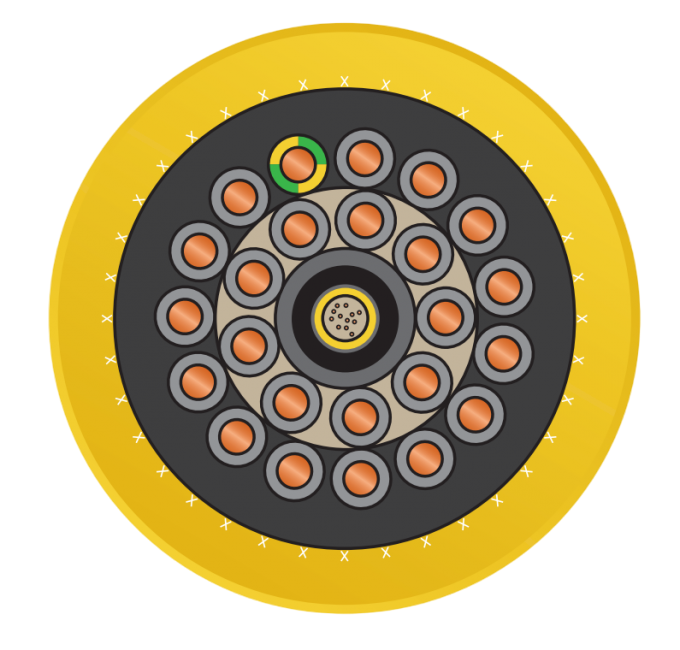

What Is Type (N)SHTOEU-J Reeling Cable?
Type (N)SHTOEU-J reeling cable represents a specialized category of highly flexible reeling cable engineered specifically for demanding industrial applications. The designation breaks down into specific technical characteristics that define its construction and performance capabilities. The "N" indicates a special neutral conductor configuration, while "SHTOEU-J" denotes the specific insulation and sheath materials designed for extreme flexibility and durability.
This cable features a round construction with multi-core design, incorporating rubber insulation that provides superior flexibility compared to traditional PVC alternatives. The (N)SHTOEU-J construction utilizes advanced rubber compounds that maintain elasticity even under repeated flexing cycles, making it ideal for continuous reeling operations. The VDE-compliant design ensures that the cable meets stringent European technical standards, which often exceed local requirements and provide additional safety margins.
The technical architecture of these cables incorporates fine-stranded copper conductors that resist fatigue from constant movement. Each conductor is individually insulated with specialized rubber compounds before being assembled into the final cable structure. The overall design philosophy prioritizes flexibility without compromising electrical performance, creating a cable that can handle the mechanical stresses of reeling systems while maintaining reliable power transmission.
What common issues do standard cables face in port environments?
Standard cables in port environments frequently encounter premature failure due to saltwater corrosion, UV degradation, and mechanical stress from constant movement. These issues result in increased maintenance costs, unexpected downtime, and potential safety hazards during critical loading operations.
Key Features That Make It Suitable for Ports
The exceptional high tensile strength of (N)SHTOEU-J cables makes them particularly well-suited for long vertical and horizontal reeling systems commonly found in STS (Ship-to-Shore) and RTG (Rubber-Tired Gantry) cranes. This mechanical strength ensures that cables can support their own weight over extended distances while maintaining electrical integrity during operation. The tensile strength characteristics are especially crucial in Australian ports where crane heights often exceed 40 meters, requiring cables that can handle substantial mechanical loads.
Oil resistance stands as another critical feature that sets these cables apart for port applications. The rubber insulation and sheath materials are specifically formulated to resist penetration by hydraulic fluids, lubricants, and other petroleum-based substances commonly found in port machinery. This oil-resistant cable for cranes prevents degradation that could lead to electrical failures or safety hazards during operation.
The abrasion-resistant marine cable construction provides exceptional durability against the mechanical wear that occurs in reeling systems. The outer sheath incorporates rubber compounds that resist scoring, cutting, and general wear from contact with cable guides, pulleys, and other mechanical components. This abrasion resistance is complemented by UV stable cable for ports characteristics that prevent degradation from intense Australian sunlight exposure.
How does UV resistance specifically benefit Australian port operations?
Australia's intense UV radiation can rapidly degrade standard cable materials, causing brittleness and cracking that leads to electrical failures. UV stable cables maintain their mechanical properties and electrical insulation integrity, ensuring reliable operation even under extreme sun exposure typical of Australian coastal environments.
The highly resilient outer sheath demonstrates remarkable performance in wet, salty, and corrosive conditions that define marine environments. The rubber formulation creates a barrier against moisture ingress while maintaining flexibility in temperature extremes. This combination of properties ensures that the cable maintains its performance characteristics regardless of weather conditions or seasonal variations.
Compatibility with Australian Standards
Compliance with AS/NZS 2802 and related Australian standards represents a crucial consideration for any cable installation in local port facilities. The (N)SHTOEU-J cable design aligns with these standards through its construction methods, material specifications, and performance characteristics. AS/NZS 2802 compliant cable ensures that installations meet local regulatory requirements and pass mandatory inspections conducted by Australian authorities.
The importance of AS/NZS compliance extends beyond mere regulatory adherence. Local standards ensure that cable systems can withstand the specific environmental conditions found in Australian ports, including temperature ranges, humidity levels, and corrosive environments. Compliance also facilitates easier approval processes for new installations and modifications to existing systems.
Australian standards for port cables incorporate requirements based on IEC (International Electrotechnical Commission) testing protocols, providing additional assurance of quality and performance. These standards specify testing methods for flexibility, flame resistance, environmental resistance, and electrical performance that ensure cables can meet the demanding requirements of port operations.
What happens if cables don't meet Australian standards?
Non-compliant cables may fail regulatory inspections, leading to installation delays, additional costs for replacement, and potential legal liability. More critically, non-compliant cables may not perform adequately in Australian conditions, resulting in premature failure and safety risks.
The testing protocols required for AS/NZS compliance include rigorous mechanical testing that simulates years of reeling operations in compressed timeframes. These tests verify that cables can withstand the repetitive flexing, tension, and environmental exposure that characterize port crane operations. The certification process provides documented evidence of performance capabilities that facility managers can rely upon for long-term planning.
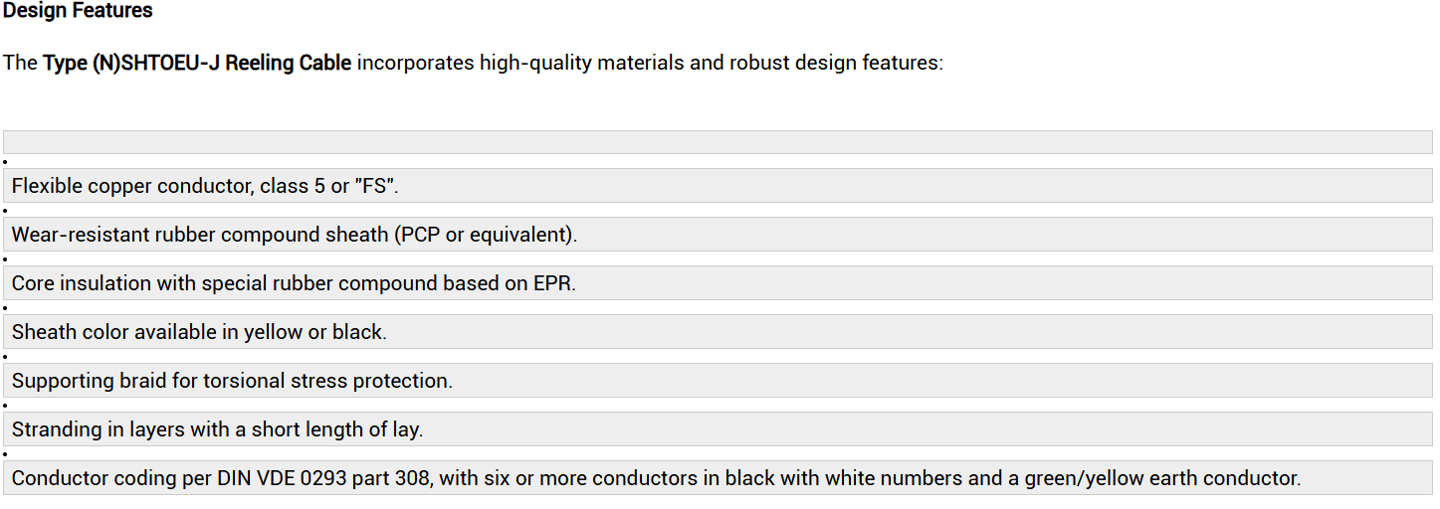

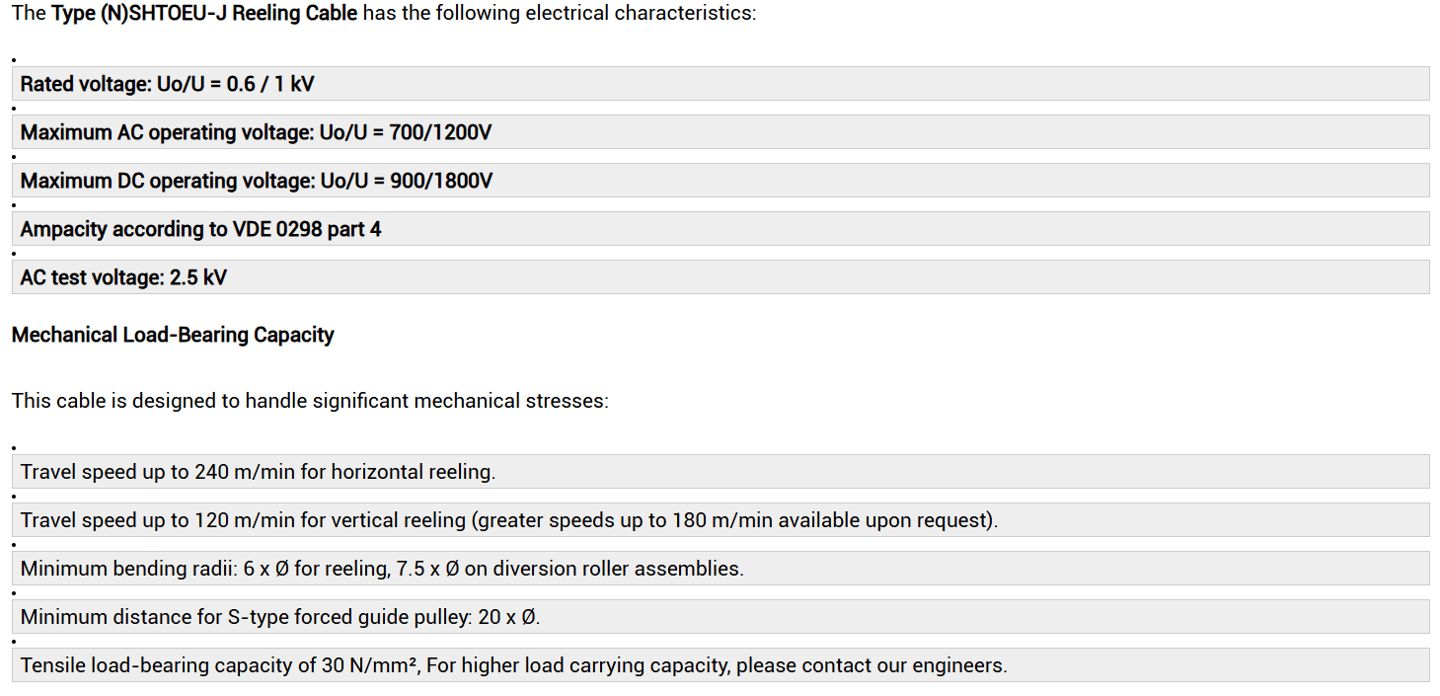

Applications in Australian Port Environments
Container handling systems represent the primary application for reeling cables for Australian port cranes, where reliable power transmission is essential for efficient cargo operations. These systems require cables that can handle the continuous movement of spreaders, trolleys, and other mobile equipment while maintaining consistent electrical performance. The flexibility of (N)SHTOEU-J cables ensures smooth operation even in the most demanding handling scenarios.
Mobile harbor cranes present another significant application area where marine-grade cable applications demonstrate their value. These cranes require cables that can handle both the mechanical stresses of lifting operations and the environmental challenges of waterfront locations. The combination of high tensile strength and environmental resistance makes these cables ideal for mobile crane installations.
Automated terminals increasingly rely on sophisticated cable systems to support their high-speed operations. The reeling drums and cable festoons used in these systems demand cables that can maintain performance through millions of operational cycles. The durability characteristics of (N)SHTOEU-J cables make them particularly suitable for these high-cycle applications where reliability is paramount.
How do automated terminals specifically benefit from these cables?
Automated terminals operate with minimal human intervention, making cable reliability crucial for maintaining continuous operations. The superior flexibility and durability of (N)SHTOEU-J cables reduce the risk of unexpected failures that could disrupt automated sequences and impact overall terminal productivity.
ERTG (Electric Rubber-Tired Gantry) upgrades represent a growing application area as ports transition from diesel-powered equipment to electric alternatives. These upgrades require cable systems that can handle the higher electrical loads and more frequent cycling associated with electric drive systems. The electrical performance characteristics of (N)SHTOEU-J cables make them well-suited for these modernization projects.
The integration of these cables into existing port infrastructure requires careful consideration of mechanical compatibility and electrical performance. The round construction and flexible design of (N)SHTOEU-J cables facilitate installation in both new construction and retrofit applications, providing versatility that port engineers value for their projects.
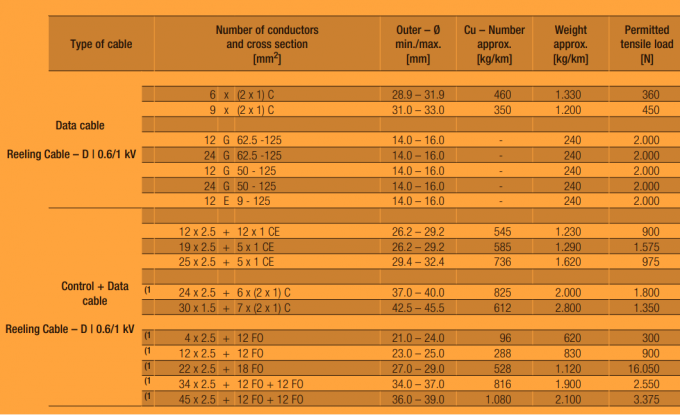

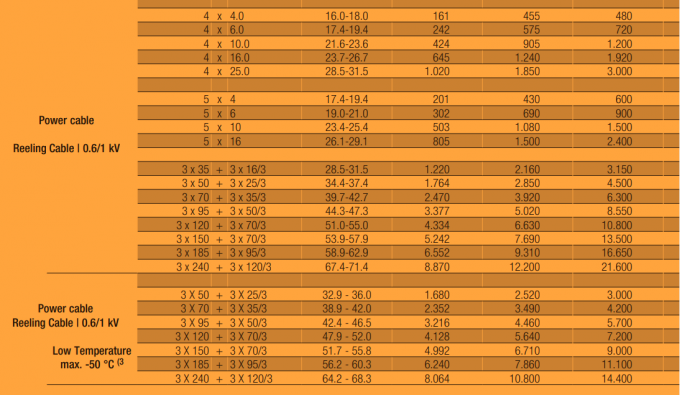

Performance in Harsh Environmental Conditions
Australian ports present some of the most challenging environmental conditions for cable systems, with intense UV radiation, high temperatures, and constant exposure to saltwater creating a perfect storm for equipment degradation. Heavy-duty port cable must withstand these conditions while maintaining electrical and mechanical performance over extended service periods.
The rubber insulation and sheath materials used in (N)SHTOEU-J cables are specifically formulated to resist the effects of high temperatures that can exceed 60°C in direct sunlight. This thermal stability ensures that cables maintain their flexibility and electrical properties even during the hottest summer days. The materials also resist thermal cycling effects that can cause standard cables to crack or become brittle over time.
UV radiation poses a particular challenge for any outdoor cable installation, but saltwater resistant crane cable incorporates UV stabilizers that prevent the molecular breakdown that leads to cable failure. These stabilizers work by absorbing harmful UV energy and converting it to harmless heat, protecting the underlying polymer structure from degradation.
What specific temperature ranges can these cables handle?
(N)SHTOEU-J cables are designed to operate effectively in temperature ranges from -30°C to +80°C, covering the full spectrum of conditions found in Australian ports. This wide operating range ensures reliable performance regardless of seasonal variations or specific installation locations.
Water ingress represents another critical challenge that long-life reeling cable must address. The rubber construction creates multiple barriers against moisture penetration, while the cable design incorporates features that prevent water from traveling along the cable length. This protection is essential in marine environments where cables may be exposed to both direct water contact and high humidity conditions.
Oil exposure from hydraulic systems and machinery presents ongoing challenges that require specialized cable construction. The oil-resistant properties of the rubber materials prevent swelling, softening, or degradation that could compromise electrical insulation. This resistance extends to a wide range of petroleum-based substances commonly found in port operations.
Choosing the Right Cable Supplier
The selection of a trusted port cable manufacturer requires careful evaluation of technical capabilities, quality systems, and regulatory compliance. Third-party testing and traceable certification provide essential verification that cables meet specified performance requirements and will perform reliably in service. These certifications should come from recognized testing laboratories that understand the specific demands of marine and port applications.
Working with manufacturers who understand Australian regulations ensures that cable specifications align with local requirements and installation practices. A certified crane cable supplier should demonstrate familiarity with AS/NZS standards and be able to provide documentation that supports regulatory compliance. This knowledge extends beyond basic compliance to include understanding of local installation practices and environmental conditions.
The importance of ongoing technical support cannot be overstated when selecting cable suppliers for critical port applications. Suppliers should offer technical expertise that can assist with cable selection, installation guidance, and troubleshooting support. This support becomes particularly valuable when dealing with complex installations or when optimizing cable performance for specific applications.
What credentials should you look for in a cable supplier?
Look for suppliers with ISO 9001 quality certification, relevant industry certifications (such as VDE or IEC), documentation of AS/NZS compliance testing, and demonstrated experience with marine and port applications. Technical support capabilities and local presence in Australia are also important considerations.
Quality management systems provide assurance that manufacturing processes consistently produce cables that meet specifications. These systems should include incoming material inspection, in-process testing, and final product verification to ensure that every cable meets performance requirements. Documentation of these quality processes provides traceability that supports warranty claims and regulatory compliance.
Feichun Cables exemplifies the characteristics of a reliable supplier through their commitment to quality, comprehensive testing programs, and understanding of Australian market requirements. Their approach to cable manufacturing incorporates the latest materials technology while maintaining focus on the specific needs of port and marine applications.
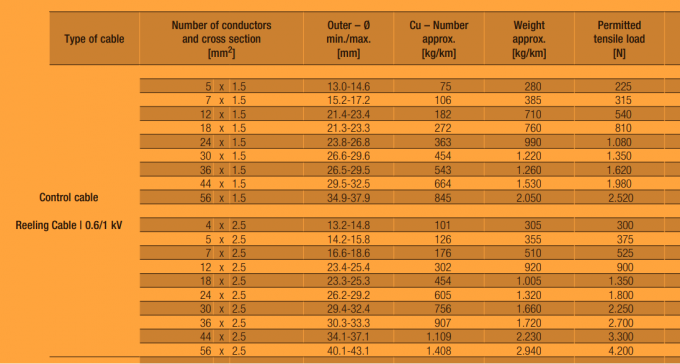


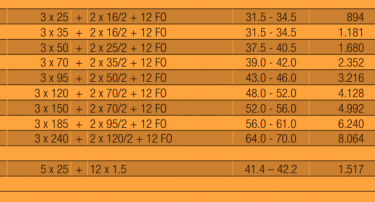
Conclusion
The demanding environment of Australian ports requires cable solutions that can deliver exceptional performance while meeting stringent regulatory requirements. Type (N)SHTOEU-J reeling cables provide the optimal combination of flexibility, durability, and AS/NZS compliance that makes them ideal for these challenging applications.
The high tensile strength characteristics ensure reliable mechanical performance in long-run crane applications, while the oil and UV resistance properties provide the environmental protection essential for marine installations. The rubber insulation and sheath construction deliver the flexibility needed for continuous reeling operations while maintaining electrical integrity over extended service periods.
Marine-grade safety considerations are built into every aspect of these cables, from material selection to construction methods. This comprehensive approach to safety ensures that port operations can proceed with confidence, knowing that their cable systems will perform reliably under all operating conditions.
The AS/NZS compliance of these cables simplifies installation and inspection processes while providing assurance that all regulatory requirements are met. This compliance, combined with the superior performance characteristics, makes (N)SHTOEU-J cables the preferred choice for discerning port operators who prioritize reliability and safety.
For port engineers and procurement teams evaluating cable options for their next project, (N)SHTOEU-J reeling cables represent a proven solution that addresses the unique challenges of Australian port environments. The combination of technical performance, regulatory compliance, and long-term reliability makes these cables an investment in operational excellence.
Ready to upgrade your port cable systems? Consult with a technical expert to discuss your specific application requirements and discover how (N)SHTOEU-J reeling cables can enhance the reliability and performance of your port operations. Professional guidance ensures optimal cable selection that meets both current needs and future expansion plans.
How to Reach Us
Get in Touch
SiteMap
Product Catalogue
Reeling Cable
Festoon Cable
Shore Power Cable




Scan to add us on WeChat
